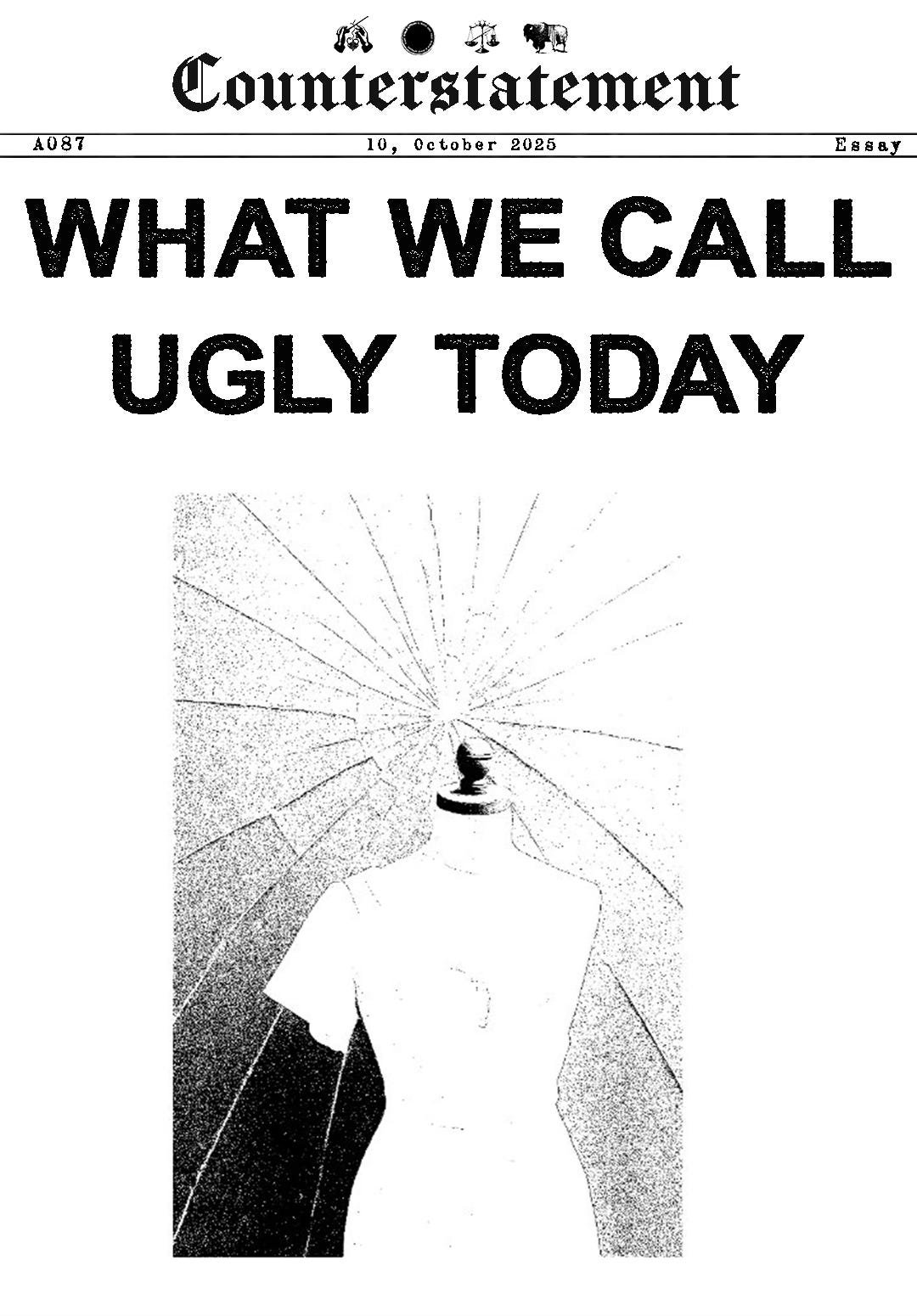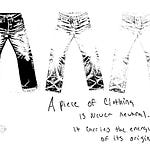Fashion rarely borrows from physics, but this idea did.
It came from a late-night lecture on the unseen structure of the universe, dark matter, spacetime, the invisible architecture holding reality together. Most of it washed over me like static, until one line detonated.
“When the universe contradicts itself, that’s when physics evolves.”
That sentence refused to leave me, because what he was really saying is that progress never comes from certainty, it comes from rupture. Physics doesn’t advance through what we already understand, it evolves when something breaks what we think we understand. When Mercury’s orbit refused to obey Newton’s equations, it wasn’t a mistake, it was the spark that led Einstein to the theory of relativity. Contradiction marked the edge of knowledge, the point where the map of reality ran out.
And that’s when it clicked for me,
what contradiction is to physics, rupture is to fashion.
The Law of Contradiction
Fashion doesn’t evolve through refinement, it evolves through rebellion. The industry moves forward only when it dares to contradict itself. The so-called correct way of dressing is inherently stagnant. It polishes, perfects, and repeats what culture already finds comfortable. But evolution begins at the point of rupture, when something feels wrong.
Comme des Garçons tearing holes in garments.
Margiela turning unfinished seams into luxury.
Helmut Lang stripping glamour down to industrial silence.
These weren’t aesthetic accidents, they were acts of defiance that forced fashion to expand its definition of beauty. Anti-fashion cracked open what clothing could even be. Just like Einstein found truth in Newton’s failure, fashion finds progress in what offends the eye first.
Contradiction isn’t the enemy of creativity, it’s the mechanism of evolution.
Contradiction → Investigation → Expansion → Evolution.
The Law of Unveiled Beauty
But contradiction alone isn’t enough.
Anyone can burn things down. Shock is cheap.
The real challenge is what you choose to build in the ashes.
That’s where the Law of Unveiled Beauty begins.
If you discover beauty outside consensus, you have to chase it. Because beauty that hides in the discarded, the unsettling, or the ignored is often where transformation begins. Monet’s “unfinished daubs” were once mocked, they became modern art. Martha Graham’s twisted contractions were called grotesque, they became modern dance. Rei Kawakubo’s asymmetrical black shrouds were labeled ugly, they became sacred.
To dismiss outlier beauty is to defend stagnation.
To pursue it is to widen the human field of perception itself.
Outlier Beauty → Pursuit → Form → Cultural Expansion.
Following the Thread
So what do you do when you spot a contradiction, when something disturbs you but also magnetizes you?
You follow it.
Relentlessly.
Its wrongness is not a warning, it’s a signal.
Consensus beauty recycles what already exists. The future hides in what unsettles you but won’t let you look away.
To shape what appears wrong into language, and to stand there while the world laughs, is the cost of evolution. Every new form of beauty demands a heretic willing to hold their ground until time proves them right.
Impressionists were ridiculed.
Punks were mocked.
Minimalists ignored.
Until culture caught up.
Every revelation begins disguised as a mistake.
That’s the cycle:
Follow the thread → Shape the form → Stand in the fire.
How to See Contradiction
But most people never even notice it. Their eyes have been trained to recognize only consensus beauty, what pleases, what fits, what sells.
Learning to see contradiction is a discipline. Like tuning an instrument, the more you practice, the clearer the note becomes.
Slow down. Beauty begins as a sensation, not a verdict. Notice what draws you before you judge it.
Lean into discomfort. If something disturbs but attracts you, pay attention. That tension is creative gold.
Look to the margins. Innovation grows in exile, not the center. Seek the ugly, the broken, the out-of-step.
Cross-train your perception. Borrow from physics, philosophy, music, literature. Contradictions rhyme across disciplines.
Document your obsessions. Keep a contradiction journal. Write down what feels wrong but won’t leave you alone. Over time, you’ll uncover your own map of outlier beauty.
To train the eye for contradiction is to train your vision for the future. What disturbs you today may be the seed of tomorrow’s language.
The Designer’s Responsibility
Consensus beauty decorates the world, it doesn’t move it.
The designer’s task isn’t to flatter taste, it’s to evolve it.
To reveal beauty where others see contradiction.
To expand what humanity is capable of perceiving.
Because contradiction isn’t the death of beauty, it’s the doorway into it.
It’s how we cross from what’s merely pleasing into what’s profound.
Follow it.
Shape it.
Stand in it.
Because in that rupture lies the chance to unveil a beauty so new, it forces the world to grow.
The Unifying Principle
Contradictions reveal where the current map of culture breaks down.
Outlier beauty shows where a new map begins.
One exposes the limits of the present, the other opens the door to possibility.
Together they form the universal law of creative evolution:
When you dare to embrace what seems wrong, ugly, or impossible, and pursue it to its end, you uncover new forms of truth and beauty.
That’s how physics evolves.
That’s how art renews itself.
That’s how fashion escapes hollow repetition and becomes a cultural transformation.
Why It Matters Now
We live in an age addicted to consensus and algorithmic taste. Everything looks right, but nothing feels alive.
And yet, evolution never comes from consensus. It comes from rupture.
It comes from those willing to chase a beauty the world hasn’t learned to recognize yet. A beauty that first appears as a contradiction, until culture finally catches up.
That physicist may have been describing galaxies and dark matter,
but what he offered was something much closer to home,
a blueprint for creation itself.
Seek contradiction.
Follow the hidden beauty.
Shape it.
Stand in it.
Because what we call ugly today
is often just the future, arriving early.












